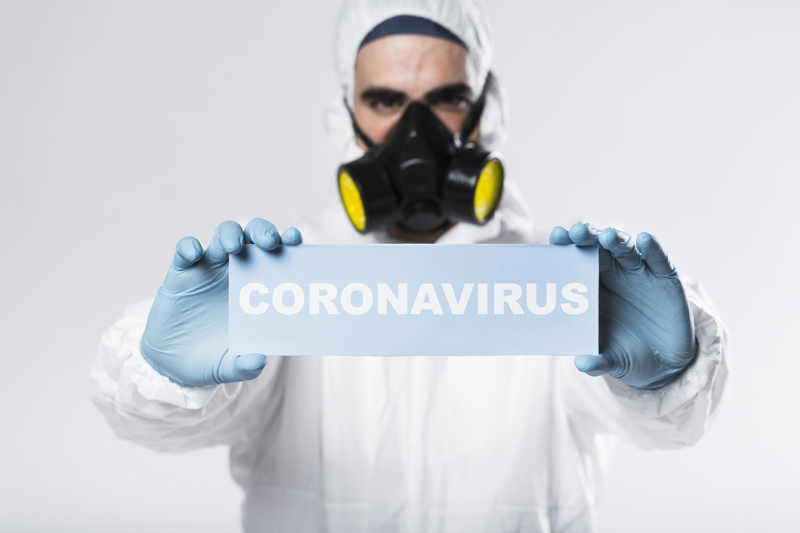With the Covid-19 pandemic spreading across the nation, concern over shortages of personal protective equipment (PPE) at U.S. hospitals is also growing. The PPE is used every day by HCP to protect themselves, patients, and others when providing care. The Centers of Disease Control and Prevention (CDC) has updated interim recommendations on PPE mainly for health care professionals (HCPs) who are managing the COVID-19 outbreak. The recommendations include preserving PPE and optimizing the supply of PPE and other safety equipment. Being a professional medical billing company, we are aware of the importance of personal protective equipment (PPE), especially during this pandemic.
PPE helps protect HCPs from potentially infectious patients and materials, toxic medications, and other potentially dangerous substances used in healthcare delivery. However, due to this current pandemic and increased hospital admissions, PPE shortage is currently posing a huge challenge to the US healthcare system. Healthcare facilities have difficulty accessing the needed PPE and are forced to identify alternate ways to provide patient care. The CDC information highlights recommendations for HCPs working in health care facilities, as well as provides strategies to address shortage of key supplies.
CDC reports that major distributors in the US have reported shortage of PPE, including N95 respirators, facemasks, eye protection, gowns, and gloves. Healthcare facilities are responsible for protecting their HCP from exposure to pathogens, and providing appropriate PPE is vital. Check out the latest updated recommendations of CDC for healthcare facilities regarding PPE.
The changes to the guidance as of April 13, 2020 are:
- To address asymptomatic and pre-symptomatic transmission, implement source control for everyone entering a healthcare facility (e.g., healthcare personnel, patients, visitors), regardless of symptoms.
- This action is recommended to help prevent transmission from infected individuals who may or may not have symptoms of COVID-19.
- Cloth face coverings are not considered PPE because their capability to protect healthcare personnel (HCP) is unknown. Facemasks, if available, should be reserved for HCP.
- For visitors and patients, a cloth face covering may be appropriate. If a visitor or patient arrives at the healthcare facility without a cloth face covering, a face mask may be used for source control if supplies are available.
The executive vice president at Kaiser Permanente, in Oakland, Calif, Dr. Parodi said that as the manufacturing shortfall in China is not going to be fixed by next month, hospitals should be prepared for existing stock to last four to six weeks.
Along with preserving PPE, CDC also provides strategies for optimizing the supply of PPE and other equipment. HCPs and facilities – along with their healthcare coalitions, local and state health departments, and local and state partners-will have to work together to develop strategies to identify and extend PPE supplies, so that recommended PPE will be available when needed most. The optimization strategies for PPE offer options such as contingency strategies (which can help stretch PPE supplies when shortage is expected, for instance, the situation if facilities have sufficient supplies now but are likely to run out soon) and crisis strategies (can be considered during severe PPE shortage and should be used with the contingency options to help stretch available supplies for the most critical needs) for use when PPE supplies are stressed, running low, or absent. When using PPE optimization strategies, training on PPE use, including proper donning and doffing procedures, must be provided to HCP before they carry out patient care activities. Some of the key points to note include:
- All U.S. healthcare facilities should begin using PPE contingency strategies now.
- Maximize use of engineering controls, such as barriers and maintained ventilation systems, and administrative controls, such as altering work practices to minimize patient contact.
- Cancel elective and non-urgent procedures/appointments.
- Reserve PPE for HCP and replace PPE normally used for source control with other barrier precautions such as tissues.
- Use re-usable PPE that can be reprocessed.
- Use PPE beyond the manufacturer-designated shelf life for training.
- Consider allowing HCP to extend use of respirators, facemasks, and eye protection, beyond a single patient contact.
- U.S. healthcare facilities experiencing PPE shortages may need to consider crisis capacity strategies, which must be carefully planned before implementation. The effectiveness of crisis strategies is uncertain and they may pose a risk for transmission between HCP and patients.
- Consider using intact PPE that is beyond the manufacturer-designated shelf life for patient care activities.
- Carefully prioritize PPE use for selected care activities. This could include reserving sterile gowns and gloves for urgent sterile patient procedures, such as surgery, and reserving respirators for aerosol-generating procedures and patient care with airborne transmitted disease risks, like tuberculosis, measles, and varicella.
- If no commercial PPE is available, carefully consider if alternative approaches will reduce the risk of HCP exposure and are safe for patient care.
- As PPE becomes available, healthcare facilities should promptly resume standard practices.
According to Anesthesiology News, if the supply chain of PPE cannot meet the demand, certain alternatives are acceptable. CDC noted that due to potential shortage of respirators, face masks are an acceptable alternative. However, during this time, respirators should be prioritized only for procedures that are likely to generate respiratory aerosols, which would pose a high risk to HCPs. And once the supply chain issues are resolved, the facilities with a respiratory protection program should return to using respirators for patients with known or suspected COVID-19. In the meantime, facilities without a current respiratory protection program should implement one. And if supplies become completely exhausted, the CDC has approved the use of homemade masks (e.g., a bandana or scarf) as a last resort.
Similar is the case for other types of PPE such as eye protection, gowns and gloves which are necessary for all HCPs who are attending patients with confirmed or possible COVID-19 infection. For instance, if there is a shortage of gowns, the recommendations are that they should be prioritized for aerosol-generating procedures, care activities when splashes and sprays are anticipated, and high-contact patient care activities in which there is a high risk for pathogen transfer to the clothing and/or hands of the HCP.
Reporting of Disposable Personal Protective Equipment (PPE)
So, how do you report disposable personal protective equipment (PPE)? According to the American Medical Association (AMA), two pairs of non-sterile gloves are already including in the medical supply package for every Evaluation and Management (E/M) service. However, you may separately report other PPE items using CPT code 99070 (Supplies and materials (except spectacles), provided by the physician or other qualified health care professional over and above those usually included with the office visit or other services rendered (list drugs, trays, supplies, or materials provided).
The 2020 CMS Assigned Cost for each PPE item are:
Shoe covers, surgical$0.219/pairSafety glasses$2.411/itemStaff gown, impervious$1.186/itemSurgical mask, with face shield$1.2395/item
| PPE | CMS Assigned Cost |
All of the CDC’s recommendations are aimed at providing the American healthcare system with maximum flexibility to deal with high risk of COVID-19 in healthcare providers who need to visit clinics and hospitals and patient surges during the COVID-19 emergency. It is very important that all HCPs interacting with patients are protected and safe. We also have to make sure that we have an effective workforce to take care of patients. Medical billing service providers will also lend their support to help frontline healthcare providers stay in practice they focus on patient care. Also, the AMA has released guidelines on CPT reporting for COVID-19 testing and medical billing companies can help providers report their services using these codes.


